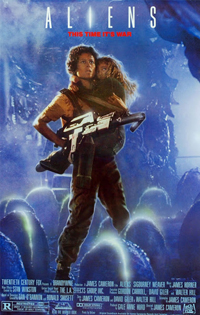Why Your Logline Matters and How to Write One

I’ve lost count of the number of loglines I’ve read but it’s in the thousands.
But I don’t just read them. I see which ones work and which ones don’t. Which loglines perform better on InkTip? Which ones compel a reader to say, "I've got to read that script."
Every week, we send a newsletter with loglines to producers, literary reps, development execs and others, whose job it is to find good scripts. Some loglines cause a reader to click-thru so they can get the script, some won’t. And just because producers are looking for a script in a particular genre does not mean they will read everything in that genre.
If there is no prior relationship with you, the key to getting them to read a script is a good title and a good logline. We’ll cover titles another time.
I’ll reveal below how you can create a logline that acts like a master key, getting you inside the room.
But first, I want to clarify the difference between a logline and a tagline.
Logline vs. Tagline
A logline is a one or two sentence description that at its simplest, clearly defines who and what the story is about.
Example of a logline: A Marines squad – along with a no-nonsense but experienced civilian woman – arrives at an abandoned space colony, unaware vicious aliens have begun colonizing it themselves.
On the other hand, a tagline is a marketing tool used most often by a studio or distributor to sell a completed film to the general public. In some cases, it can be used by a producer or other executive to pitch an unproduced project to financiers, television networks, and others, but it is best to avoid using them when pitching an unproduced script to a producer.
A tagline helps enhance the surrounding context of a project’s promotional materials, such as a movie trailer or poster. It typically appeals to one’s emotions and relies on the recipient to grasp the tagline’s surrounding context. Without proper context, a tagline does not make much sense in terms of relaying the story to the recipient. In other words, it’s vague and can’t tell you what the movie or show is about.
Example of a tagline: “This time it’s war.”
That’s a tagline for the movie "Aliens" that can be seen on one of its movie posters. If the film "Aliens" never existed, and you then wrote the script and posted it on InkTip, you would certainly not attract any interest if you relied on that tagline. Instead, you'd pitch using a logline like this:
A Marines squad – along with a badass civilian woman – arrives at an abandoned space colony, unaware vicious aliens have begun rapidly colonizing it.
Then why does a tagline exist?
The tagline helps sell the movie to the public because it works in conjunction with promotional materials. If you see a tagline on a poster, it is surrounded by proper context. In the case of the poster for "Aliens," as seen below, this context can be visual cues (we know it will have plenty of action because of the gun), prior knowledge of the project (you are aware it’s a sequel to "Alien," and you may have seen the trailer), familiarity with the actors on the poster, and many more factors. In today’s media, the tagline “This Time It’s War” could also be used in radio ads, trailers, website splash ads, hashtags on social media, etc. All of these would be examples of a tagline used within the proper context.
But a tagline definitely doesn’t replace a logline, especially when you are pitching an unproduced script.

When you list a script on InkTip, your context is simply the title of your script and your logline. Even when sending an email to a producer, unless you are producing a project and already have mock promotional materials, leave the tagline, take the cannoli, er, the story.

Leave the gun tagline; take the canno--the story..mmm, where were we?
Let’s go back to loglines.
An ideal logline concisely introduces the main narrative of a story, while avoiding unnecessary details, plotting, and ambiguity. In most cases, it answers the question, “What is this story about? Who is it about and what stands in his/her way?”
If I were to write the definition of a logline using a logline itself, here is how I’d write it:
A fresh-out-of-concept logline discovers it has one to two sentences to reveal its protagonist’s main journey and problem, while avoiding plotting, taglines and ambiguity.
We have a logline for Logline: The Movie!
Let’s break that down.
Concept
A fresh-out-of-concept logline discovers it has one to two sentences to reveal its protagonist’s main journey and problem, while avoiding plotting, taglines and ambiguity.
What do I mean by “fresh-out-of-concept?” Well, besides a play on words (“fresh out of school”), it means the logline should derive from an easily understood concept. Is your script high-concept or low-concept? Can someone else easily repeat what your story is about if you told them in only ten seconds or less?
Some stories are very high-concept on surface, such as Cowboys vs. Aliens but be careful not to get lazy and just introduce the script as cowboys fighting aliens. As we saw by its low box office results years ago, that title alone won’t get people in theaters, much less inspire a reader to want to know about your story, and thus read your script.
So when you really want to sell a script without the reader knowing anything else, a concept should be more than just a basic idea or theme. Saying it’s a story about “forgiveness” is not a concept. Neither is saying, “My story is about how we all hurt each other as human beings.” That’s a thematic statement you write in your high school English class to describe the book you pretended to read – or a statement you make to impress your first date. (Ok, perhaps that’s just me.)
This is also not a concept: “It’s about boxing.” That’s an element in your story and offers a vague idea of the subject matter, but your concept in rough form should sound more like this: “An old man reluctantly teaches boxing to a young woman.” Even if an audience doesn’t remember any more details, if they catch a trailer of Million Dollar Baby and see Clint Eastwood teaching boxing to Hilary Swank, they’ll “get it.”
When the audience sees this image, they know the concept and the genre given the stars pictured. Clint Eastwood is a brand. You pretty much know you'll get a grizzled character with a haunted past.
However, our script is not yet shot, much less, optioned, so we don’t have the luxury of selling a loose concept with the help of a trailer full of movie stars whose types of films we recognize (Eastwood = grizzled old cranky man with haunted past who becomes a hero!), along with a Hollywood score and voiceover. All that extra stuff is context. Our context is simply a logline and a title. We’re just trying to get a reader to read our script based on that.
So in conclusion, concept is important, but it doesn't quite complete a logline. We need to find out the protagonist’s main journey and problem. Let’s continue constructing a logline for Million Dollar Baby.
Reminder of the logline for Logline: The Movie:
A fresh-out-of-concept logline discovers it has one to two sentences to reveal its protagonist’s main journey and problem, while avoiding plotting, taglines and ambiguity.
Main Journey
In addition to the concept, we need to reveal our protagonist’s main journey and problem. What do I mean by journey? I’m using it in accordance to the hero’s journey. If you aren’t familiar with the hero’s journey, I recommend reading this. You could even google “hero’s journey” in the meantime. But do check out this book. Even if your story doesn’t fit every aspect of the “hero’s journey,” your protagonist is still doing things in your story most likely to reach an end goal, whether they are taking action to get something they want, or they are forced to take action (such as in a horror). The only exception is if your story is experimental or a series of vignettes.
By main journey, I mean your protagonist’s “A story,” – the main narrative throughline we paid to see the hero complete – not the “B story.” So if your script is an action/thriller about a hero who must escape danger but he has family issues back home, then the main journey is the life and death stakes the hero faces. After all, this is an action/thriller, so the action must come first. All of the other character stuff is important, but in an action/thriller, the main narrative involves the external stakes.
On the other hand, if your story is a gripping drama, then the main journey should be what the hero is primarily dealing with in order to advance the plot. For simplicity, in the case of Million Dollar Baby, we’ll refer to the film’s hero as Clint Eastwood, rather than by Eastwood’s character’s name. In that film, the hero’s main journey involves Clint Eastwood training Hilary Swank to become a competitive boxer. The other storylines that involve supporting characters, or his emotional journey, is indeed important and makes his character interesting. Yet in this case, those other storylines are not the main throughline that involves the main plot. So if we wrote a logline for Million Dollar Baby, we’d first mention how Clint Eastwood is training Hilary Swank. If his emotional journey is part of his conflict, and hopefully the hook of the story, then we may also include that, considering it’s a drama which thrives on emotional, inner conflict. But for the sake of writing a logline, the main journey would be Eastwood training Swank alone. If we can fit the rest, that’s dessert.
Logline for Logline: The Movie:
A fresh-out-of-concept logline discovers it has one to two sentences to reveal its protagonist’s main journey and problem, while avoiding plotting, taglines and ambiguity.
The Problem
This refers to what stands in the protagonist’s way. What makes the protagonist suffer? Some call this “conflict” or “obstacle.” I’m using the word “problem” here because we tend to treat the word conflict only in relation to external forces diametrically opposed to the protagonist. In other words, the antagonist is seen as either a villain of some sorts, or major arguments between couples. However, the challenges to the protagonist’s journey can be present internally, such as self-doubt, trauma, or be something more abstract such as time. So I use the word “problem” because it tends to fit films that are not as high-concept or are not genre films, such as dramas. The word “obstacle” can similarly conjure the image of a sadistic warden, a terrorist, a killer, otherwise known as “bad guys.” However, the problem simply refers to what causes the hero to struggle and slow their momentum down. What stands in their way from getting what they want to achieve?
In the case of Million Dollar Baby, I would write a logline that focuses on Clint Eastwood’s inner demons as the problem, rather than on any external character. In the movie, Eastwood first struggles with the decision to train Hilary Swank because we later find out one of his demons: he is estranged from his daughter. He seems burdened by guilt or anguish, and his letters to his daughter have been returned unread for years. By training Swank, he would be opening his heart to vulnerability and forcing him to confront his guilt regarding his daughter in the face of this new “surrogate” daughter. Likewise, Hilary Swank finds a father figure in Clint Eastwood.
So the fact that this old, cranky man trains a girl to box is a nice concept that displays a contrast of characters. But the hook is why he decides to train her and why she chooses him: they both fill a void in each other’s lives.
Logline for Logline: The Movie:
A fresh-out-of-concept logline discovers it has one to two sentences to reveal its protagonist’s main journey and problem, while avoiding plotting, taglines and ambiguity.
One to Two Sentences
Think of one to two sentences like it’s a ticking clock element in a story. You want to take all the good stuff in your script and really nail it down before you run out of space. I’ve found that one to two sentences is perfect. It can appear tough to reduce your masterpiece to such lengths, but again, you should focus on what your story really comes down to, what your protagonist’s main journey is and what stands in his/her way.
Here’s how you can reduce your logline length based on the loglines I’ve seen that are way too long: Skip any setting descriptions and any other details that are not crucial to our understanding of the basic concept. If the story is set in a particular location or time period that is very necessary to mention, then do so. But do not entertain the thought of including unnecessary details. Example: “World War II Russia” is worth mentioning. But this does not belong in a logline: “Deep in the heart of Russia, on the cold steps of a Moscow palace…” Save your prose for a novel.
You also want to avoid mentioning every twist and turn in the story. That final twist ending is not something you want to spoil in your logline. Every major plot point is not necessary either. Only mention the inciting incident – the main premise that moves the hero near the beginning of the story. Have faith that your logline and your script are strong enough that the reader will discover that great scene in the second act when they actually read the script.
Finally, tell someone your story out loud. Tell them what it’s about in five minutes. Then, ask them to repeat what it’s about. Pay attention to what they remember. Then, ask them what they really care about in the story? That’s the dramatic question in your script. Work on telling them what the story is about in one to two sentences. Stick to only what really matters – will the hero save his kidnapped daughter? Will the high school underachiever save Latin class? The dramatic question hinges on the protagonist emerging from struggle. Set up the struggle in one to two sentences – that’s the main action that will be most important to selling the film to an audience, and thus most important to the reader.

Practice makes perfect. Tell your story out loud to someone, preferably a human.
Logline for Logline: The Movie:
A fresh-out-of-concept logline discovers it has one to two sentences to reveal its protagonist’s main journey and problem, while avoiding plotting, taglines and ambiguity.
Avoid Taglines, Plotting and Ambiguity
To reiterate, know the difference between a logline and a tagline. Taglines do not impress or excite any reader. They should not be included in your logline.
Plotting refers to including too many plot points. Keep it simple: stick to the main story that sets off the action as well as the problem. One thing I notice (especially in comedy loglines) is that writers will often include multiple wacky characters that aren’t necessary. For example, a logline might read, “A greedy bank manager decides to rob his own bank with the help of a trio of ex-con buffoons, but must also avoid an escaped lion, two angry cops, a circus performer on steroids, and a stop-at-nothing news reporter in order to grab the loot.”
The bank story may well involve all sorts of hijinks, but it’s better to keep it simple:
A greedy bank manager decides to rob his own bank with the help of a trio of ex-con buffoons, but can’t even manage his own mayhem morning as he’s chased by a variety of psychotic characters before even arriving at the bank.
A greedy bank manager decides to rob his own bank with the help of a trio of ex-con buffoons, but can’t even get to the bank without completing a morning from hell.
A greedy bank manager decides to rob his own bank, but can’t even solve the combination lock to his own chaotic morning, as he’s chased by various psychos.
I reduced the length with each new logline. By grouping the wacky cast of characters as “various psychos,” the logline gets the point across much easier: there are people in his way (the problem). It’s not crucial for us to know details about the various types of people that get in the bank manager’s way of robbing his own bank unless you can keep it simple (i.e. one antagonist, such as a nosy cop).
As far as ambiguity, one habit I’ve noticed is writers not being clear what the journey or the problem is. Be clear. Always. The difference between hinting and not spoiling everything in a logline is this: when you write your logline, if the reader can’t reasonably use their imagination to what you are not specifically naming, then leave it out. Here’s an example: A pilot with a “hero complex” wakes up in a desert with only flashes of how his plane crashed. There’s no wreck, no one around for miles, except for two sobbing women who claim he must deliver a package across the desert in one day before another plane crashes.
There’s enough detail in that logline to set the story in motion, but not enough to go into who he is supposed to deliver the package to, which allows us to use our imagination.
On another note, do not be tempted to “teach” the audience a moral lesson. And definitely do not predict how an audience will react if the movie is made. I’ve read loglines that had this statement: “The audience will laugh, they audience will cry.” Or this: “You will not regret reading this.” These statements are arrogant and naive. No one in the industry is Nostradamus. We don’t definitively know how an audience will react, especially if the script hasn’t even been optioned yet. Bearing confidence is good, but be confident in your ability to write well. The rest is out of all of our control.
Logline for Logline: The Movie:
A fresh-out-of-concept logline discovers it has one to two sentences to reveal its protagonist’s main journey and problem, while avoiding plotting, taglines and ambiguity.
The Protagonist
I left this for last because I’ve seen the least amount of issues with writers including the protagonist in loglines compared to some of the other elements. But I do see some issues.
One of them is proper names. Don’t include your protagonist’s name in the logline. Yes, IMDb loglines do it. But IMDb loglines are sometimes created by people involved in the film that are trying to brand a character and help market a film. They want to create unforgettable characters or perpetuate their existing fame by including their name in the marketing: Vito Corleone, Tracy Flick, Keyser Söze, Norman Bates, Jack Sparrow, Tony Montana, etc. But your script is not there yet. Again, don’t compare your script to a completed movie with a built-in audience. So don’t name-drop your characters. No one has heard of your characters in the news or in pop culture references.
To give your protagonist some pop, you can include an interesting trait or description. Just keep it brief.
Some examples: A chemistry teacher with months to live. A blind swordsman. A sharp-mouthed, pregnant teenage girl. A washed-up boxing manager. This can help liven up your logline more than if you wrote “a man” or “a woman” or “a cop,” although sometimes it is necessary to just say “a man” or “a woman.” Use dynamic language rather than the usual descriptions. Instead of “a police officer” write, “an insanely-by-the-book cop.” Or, instead of “Trevor (17),” write, “a nervous teen boy.”
Also, you’d be surprised to see how many loglines I’ve read that don’t mention a protagonist at all. These loglines will mention a basic idea, such as space ships arriving at some planet, but neglect to mention any protagonists. Who is the audience going to be following for an hour and a half? Just space ships? Or, I’ll see a logline such as “The powerful story of the Spanish-American War.” This is not a logline; it’s just the setting. Who is the hero? Who will a producer cast to play the lead role? That’s what the reader wants to start visualizing as they read.
The Complete Logline
Put all of these elements together and we have this hopeful knockout-of-a-logline for Million Dollar Baby:
A washed-up boxing manager reluctantly teaches a lonely-yet-spunky young woman how to box…while battling his own demons as an absentee father.
Let’s compare this logline to the definition of the ideal logline:
A fresh-out-of-concept logline discovers it has one to two sentences to reveal its protagonist’s main journey and problem, while avoiding plotting, taglines and ambiguity.
We have the protagonist (a washed-up boxing manager), the loose concept (old man teaching boxing to young girl), the protagonist’s main journey (reluctantly teaches a lonely-yet-spunky young woman how to box), and his problem (reluctant, battling his own demons), all while avoiding unnecessary plotting, taglines and ambiguity. Oh, and we’ve kept it under one sentence (with the aid of ellipses) and introduced the hook (how coincidental that he’s an absentee father teaching a young woman)!
In summary, keep your logline concise, make sure you sufficiently introduce the protagonist and what they are after, what’s in their way, keep it simple, and avoid taglines and ambiguous statements.
To help you master loglines, we have developed a new tool called the Logline Lab.
Use it to create industry-standard loglines. Once you get the hang of it, use it in your script listing on InkTip and in anywhere else where your goal is to sell your script.
You should see a difference in the number of script reads.
Let us know any feedback you have about this article. Enjoy!
 Michael Kim
Michael Kim
Questions? Comments? Write me at jerrol@inktip.com
https://pro-labs.imdb.com/name/nm3207158/
Michael Kim has worked in every department at InkTip. He is now the VP of Product Development. His main interest includes reading good loglines with prahper spehling and his main nightmare is seeing loglines that aren't loglines.
Contact InkTip
